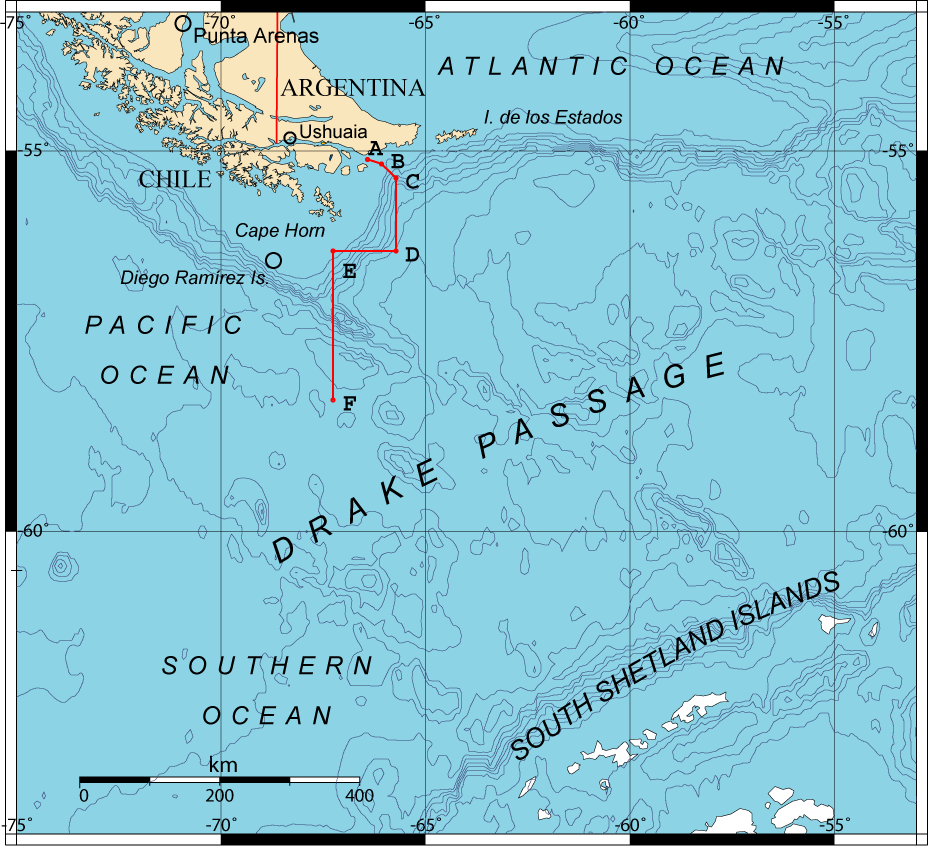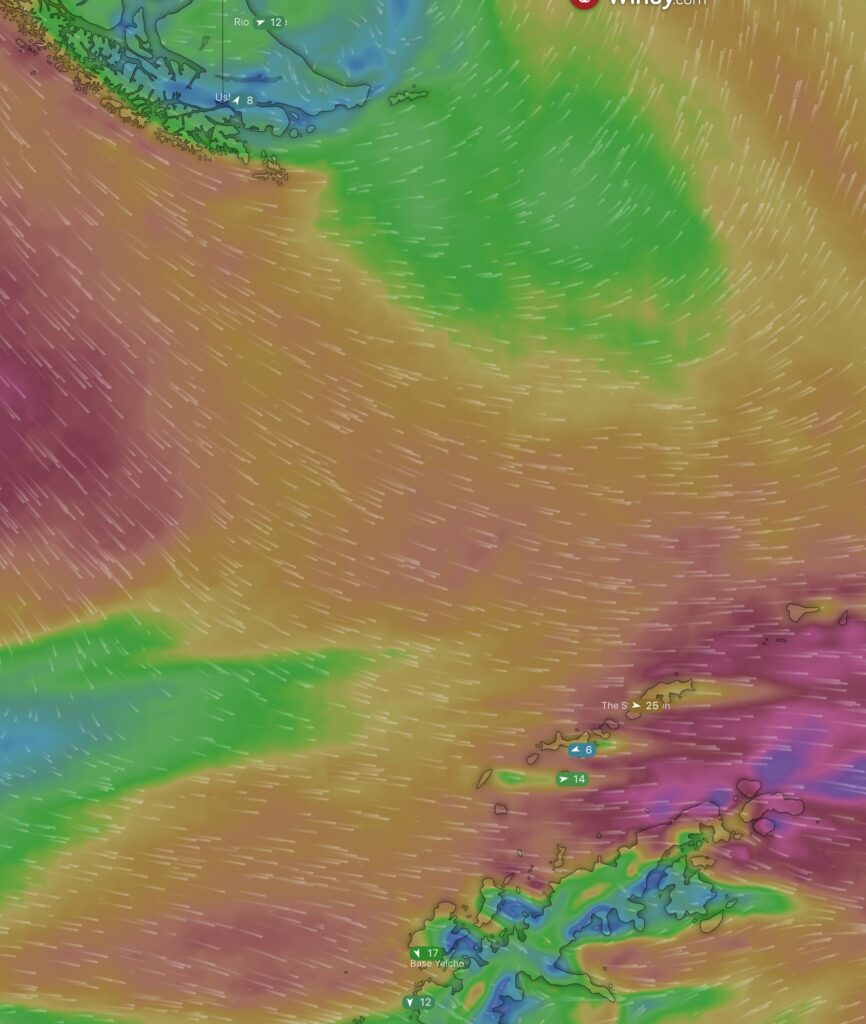Crossing the Drake Passage, which separates South America from Antarctica, has changed significantly from the time of early Antarctic expeditions to the present day.

In the past, crossing the Drake Passage was a dangerous and unpredictable journey, with ships often encountering rough seas, high winds, and icebergs. The passage could take several weeks and many ships were lost or damaged. Many ships were not equipped for the harsh conditions and crew members would have to face cold, hunger, and illness.
Crossing Drake’s Passage on modern ships.
Today, crossing the Drake Passage is much safer and more comfortable. Modern ships are equipped with stabilizers, which help to reduce the rolling motion of the ship and make the journey more comfortable. The passage can now be crossed in about two days by modern ships and the weather conditions are monitored in advance, making it easier to plan the trip.

Stabilizers are installed on ships to help reduce the rolling motion of the ship, making the journey more comfortable for passengers and crew. There are two main types of stabilizers: passive and active.
Passive stabilizers are devices that are installed on the ship’s hull and work by increasing the ship’s resistance to rolling. They typically consist of fins that are mounted on the hull and extend horizontally into the water. As the ship rolls, the fins create drag, which helps to dampen the rolling motion of the ship.
Active stabilizers are systems that use mechanical or hydraulic devices to actively counteract the rolling motion of the ship. These systems typically consist of fins or fins-like appendages that are mounted on the ship and can be extended into the water. The fins are controlled by a computer system that monitors the ship’s roll and adjusts the position of the fins to reduce the rolling motion. Some ships use both passive and active stabilizers for a better performance.
Both types of stabilizers work by changing the ship’s center of gravity, reducing the amount of roll and making the journey more comfortable for passengers and crew. They are particularly useful in rough seas, such as those found in the Drake Passage, where the rolling motion of the ship can be severe.
Inverted Bows
An inverted bow is a design feature that is intended to help a ship perform better in rough seas. The inverted bow is characterized by a bow shape that is turned upwards, rather than the traditional shape that is turned downwards.
The inverted bow design helps to reduce the ship’s bow wave, which is the wave of water that is created by the ship as it moves through the water. In traditional bow designs, this wave can be very large and can cause the ship to pitch and roll in rough seas, making the journey uncomfortable for passengers and crew.
An inverted bow, on the other hand, helps to reduce the size of the bow wave, which can help to reduce the pitching and rolling motion of the ship. Additionally, the inverted bow can help to reduce the amount of water that is shipped over the bow in rough seas, which can help to keep the ship drier and more comfortable for passengers and crew.
It is also important to note that the inverted bow is not a new feature, it has been used in the past, but in specific type of vessels such as ferries, workboats and some research ships, but it’s not a common feature in cruise ships.

Tips & tricks
Be aware that once you are feeling really bad even seasick medication won’t work as normally it has to be taken some time in advance. And of course they have several side effects too.
- Get plenty of fresh air: Being out on deck and getting some fresh air can help to reduce symptoms of sea sickness.
- Avoid strong smells: Strong smells, such as diesel fuel, can aggravate sea sickness, so try to avoid them.
- Keep your eyes on the horizon: Focusing on the horizon can help to reduce the sensation of motion and can help to reduce symptoms of sea sickness.
- Eat light meals: Eating heavy meals can make sea sickness worse, so try to stick to light meals and snacks.
- Stay hydrated: Drinking plenty of water can help to reduce the symptoms of sea sickness.
- Medications: Over-the-counter medications such as Dramamine, Bonine and others, can help to reduce the symptoms of sea sickness. However, it is important to consult with a doctor before taking any medication, especially if you have any pre-existing medical conditions.
- Practice relaxation techniques: Techniques such as deep breathing and meditation can help to reduce the symptoms of sea sickness.
- Get enough sleep: Being well-rested can help to reduce the symptoms of sea sickness.
- Avoid alcohol and smoking: Alcohol and smoking can make sea sickness worse, so try to avoid them.
- Listen to your body: If you start to feel sea sick, it’s important to listen to your body and rest.
